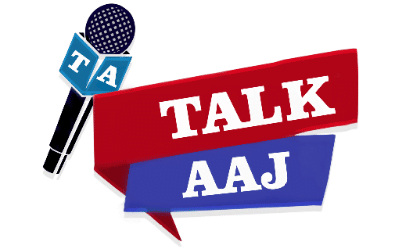What Is Insurance Complete Details in 2023
Insurance is a type of risk management primarily used to hedge against the risk of a contingent, uncertain loss. It is a form of risk management primarily used to hedge against the risk of a contingent, uncertain loss. An insurer, or insurance carrier, is a company selling the insurance; the insured, or policyholder, is the person or entity buying the insurance policy. The amount of money charged by the insurer to the insured for the coverage set forth in the insurance policy is called the premium.
READ ALSO | How to do MSME registration? Know the process, fees, benefits, terms and conditions
- Health insurance, which helps pay for medical expenses.
- Auto insurance, which provides coverage for damage to vehicles and for liability in the event of a car accident.
- Homeowner’s insurance, which covers damage to a person’s home and belongings.
- Life insurance, which pays a benefit to the policyholder’s beneficiaries upon the policyholder’s death.
- Disability insurance, which provides income to individuals who become unable to work due to an accident or illness.
- Liability insurance, which covers legal expenses and damages in the event that the policyholder is found liable for causing harm to another person or damaging their property.
Insurance policies typically include exclusions, conditions, and limits on the coverage provided. The policyholder must usually pay a deductible before the insurance coverage begins, and there may be limits on the amount that the insurer will pay out. It’s also important to read and understand policy document and seek help if have any doubts about coverage.
In addition to buying insurance policies, some individuals and companies choose to self-insure by setting aside money to cover future losses.
In addition to the types of insurance I mentioned earlier, there are many other specialized types of insurance that are available to protect against specific risks. Some examples include:
- Property insurance for businesses, which covers damage or loss of a company’s physical assets, such as buildings and equipment.
- Cyber insurance, which covers against losses due to cyber attacks or data breaches.
- Marine insurance, which covers ships, cargo, and other maritime-related risks.
- Aviation insurance, which covers aircraft and related risks.
- Errors and omissions insurance (E&O), which covers professionals such as lawyers, consultants, and engineers against claims of negligence or failure to perform.
The cost of insurance policies can vary depending on the type of coverage and the level of risk. Factors that can affect the cost of insurance include the age, health, and occupation of the policyholder; the location, age, and condition of the property being insured; the amount of coverage being purchased; and the deductible amount.
There are many different types of insurance available and it is important to carefully evaluate the risks you face and decide which types of insurance are appropriate for you or your business. A financial advisor or insurance agent can help you assess your insurance needs and find the right coverage for your specific situation.
READ ASLO| Life Insurance: There are 8 types of policies available, take a plan according to your need
In addition to the different types of insurance that are available, there are also different ways that insurance policies can be structured and purchased. Some common options include:
- Individual policies, which are purchased by individuals to protect themselves and their families.
- Group policies, which are purchased by employers or other organizations to cover a group of people.
- Employer-sponsored policies, when employer provide some insurance policies such as health or life insurance to its employee.
Another way to purchase insurance is through government programs. These programs are usually designed to provide coverage to people who may not be able to afford insurance through traditional channels or who may have difficulty obtaining coverage due to pre-existing medical conditions. Some examples of government-sponsored insurance programs include:
- Medicare, which provides healthcare coverage to older adults in the United States.
- Medicaid, which provides healthcare coverage to low-income individuals and families in the United States.
When it comes to insurance, it’s very important to do your own research, read the policy documents carefully and consult with a professional if you are unsure. Understanding what is and what is not covered by your policy can help you to budget for unexpected costs and can prevent unpleasant surprises down the road.
Another important aspect of insurance is claims management and customer service, insurance companies have team who handle claims and help you with the process of filling a claim and going through the process, customer service is important because when you have a claim or an issue, you want to make sure that the insurance company responds quickly and effectively.
In addition to the different types of insurance and ways to purchase them, there are also different ways that insurance claims can be handled. The two most common methods are:
- First-party claims: These are claims made by the policyholder themselves. For example, if someone has a car accident and their car is damaged, they would file a first-party claim with their own insurance company to have the damage repaired.
- Third-party claims: These are claims made by a party other than the policyholder. For example, if someone causes a car accident and damages another person’s car, the other person would file a third-party claim with the at-fault driver’s insurance company.
Another way of claims management is usage of online platform, many insurance companies providing online platform for customers where they can check the status of their claim, upload the required documents, and communicate with the insurance company.
Another important aspect of insurance is underwriting, it is the process where insurance company evaluates the risk of insuring a particular individual or entity. Underwriting considers factors such as age, health, and occupation of the policyholder; the location, age, and condition of the property being insured; and the amount of coverage being purchased. This process helps insurance companies to price policies appropriately and determine which risks they are willing to take on.
In addition, reinsurance is a way of insurers to manage their own risk. Reinsurance companies provide coverage to insurance companies, spreading risk and allowing them to continue writing policies without having to worry about becoming overwhelmed by a large number of claims.
Overall, insurance is a complex field and there are many aspects to consider when thinking about purchasing coverage. It’s important to do your own research and seek professional help if you are unsure about anything.

READ ALSO | 2023 Best Laptop Brands in India Details Review
READ ALSO | Top 10 Best Smartwatches Under 10000 In India – Buyer’s Guide Review
READ ALSO | Upcoming Smartphone in India 2022 Details Review
READ ALSO | How To Download Social Videos From Instagram
Posted by Talkaaj.com
???????? Join Our Group For All Information And Update, Also Follow me For Latest Information???????? |
|
| Click Here | |
| ???? Facebook Page | Click Here |
| Click Here | |
| ???? Telegram | Click Here |
| ???? Koo | Click Here |
| Click Here | |
| ???? YouTube | Click Here |
| ???? Google News | Click Here |














